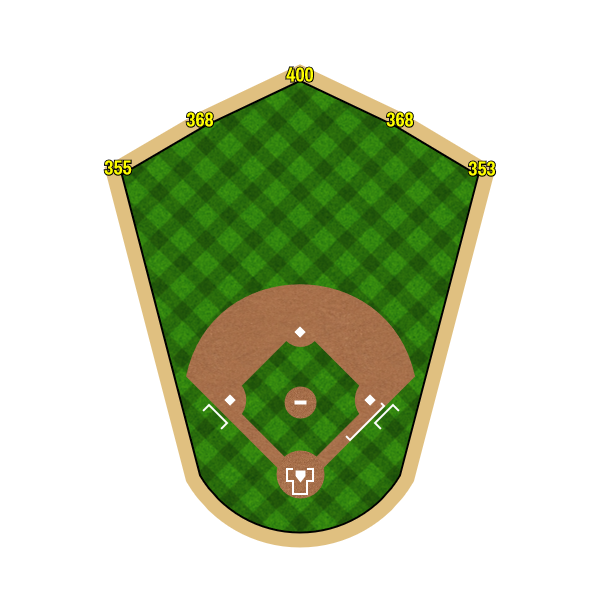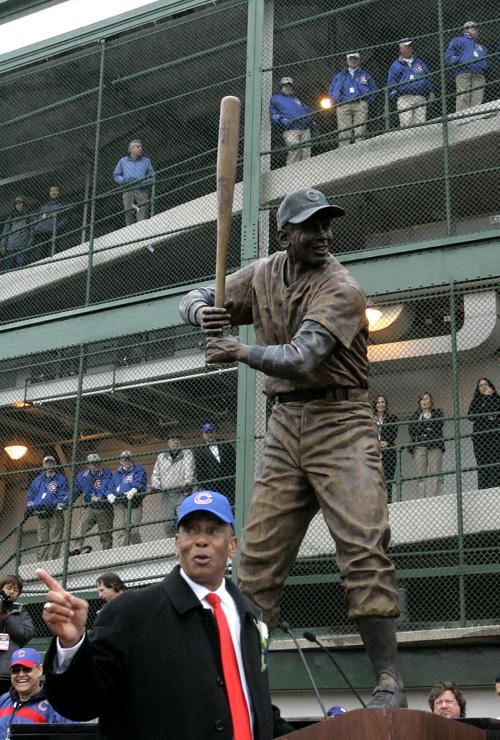Chicago’s Wrigley Field is a national monument for baseball fans and the most prominent icon of baseball’s golden age. Opened in 1914, this home ground of the Chicago Cubs is the oldest National League ballpark and second oldest MLB stadium after Fenway Park. Wrigley Field is one of the last remaining examples of “Jewel Box” ballpark design and only remnant of the Federal League symbols. Its historical significance led to the ballpark becoming a US National Historic Landmark in 2020.
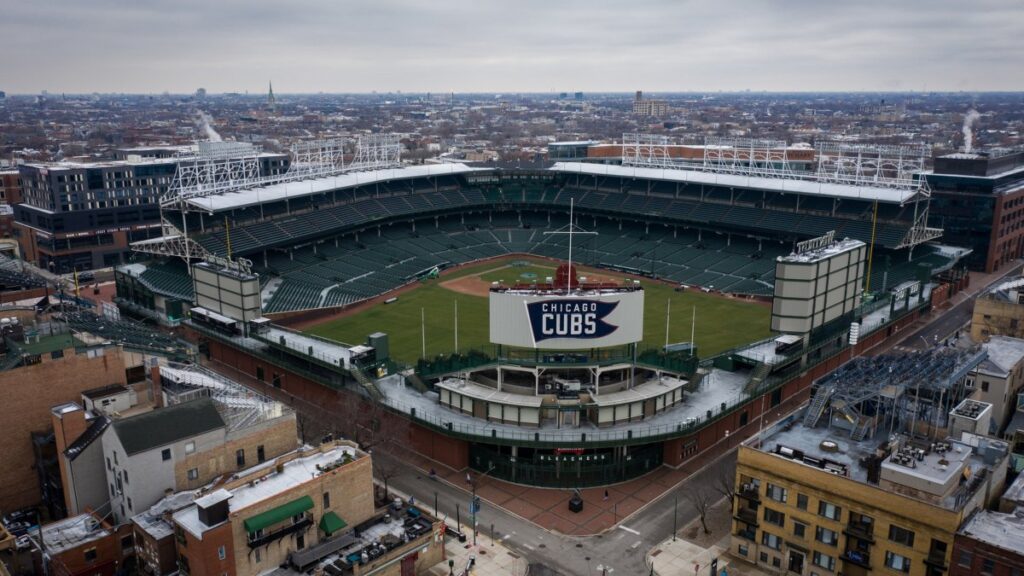
The Chicago baseball stadium stirred the imagination of baseball enthusiasts with its red marquee at Gate 1, ivy-covered brick wall, old scoreboard, and enticing architectural dimension. Wrigley Field was named in 1927 after William Wrigley Jr., who was the founder of the Wrigley Company that bought the Chicago Cubs in 1921. Before that, it was Weeghman Park from 1914 to 1920 and then Cubs Park until 1926. Los Angeles had another Wrigley Field (demolished in 1969) that hosted minor league games from 1925 to 1957 and became the home ground of the MLB franchise Los Angeles Angels in 1961.
The History
The modern-day Wrigley Field occupies the land where once stood the Chicago Lutheran Theological Seminary. In December 1913, Charles Weeghman, the owner of the Federal League franchise the Chicago Whales got a 99-year lease of the seminary ground. It became Weeghman Park after the construction of stands and the field. The Whales began playing their games there, came second in 1914, and won the 1915 championship. However, the Federal League was dissolved after the 1915 season. Local-lunch czar Weeghman teamed up with chewing-gum magnate William Wrigley Jr. and acquired NL franchise the Chicago Cubs.
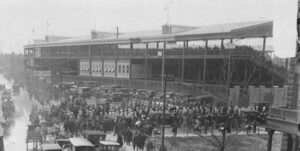
The Cubs moved to Weeghman Pak in 1916 and played their first game there beating the Cincinnati Reds 7-6 on April 20, 1916. Two years later Wrigley became the majority owner in the franchise and the stadium became Wrigley Field in 1926. The owners built a new upper deck in 1927. Inspired by Indianapolis-based Perry Stadium, Bill Veeck began planting ivy vines near the outfield wall in 1937.
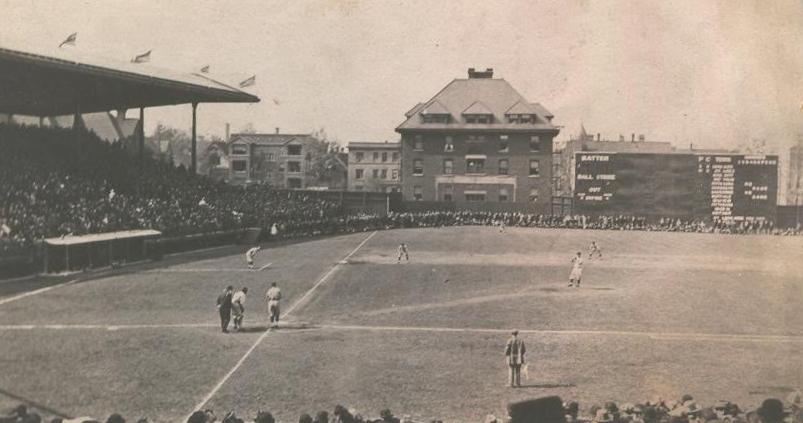
In 2009, the owners Ricketts family began plans to renovate the 95-year-old Wrigley Field. They presented the 1060 Project proposing a $575-million renovation plan in 2013. The privately funded 5-year renovation witnessed major changes to the stadium’s façade, infrastructure, concourse, seating arrangements, concessions, facilities, clubs, and patio. It began in 2014 and continued until 2019 in four phases. Two Jumbotrons – 3,990 sq. ft and 2,400 sq. ft – came to adorn left and right-field bleachers. New additions included restaurants, patio areas, batting tunnels, additional outfield advertising signages, Zachary’s distinctive boutique hotel, the Cubs Plaza, and an office-retail complex.
In 2014, Wrigley field turned 100. The Chicago Cubs celebrated it by wearing the Chicago Whales uniform against the Arizona Diamondbacks on April 23 that year.
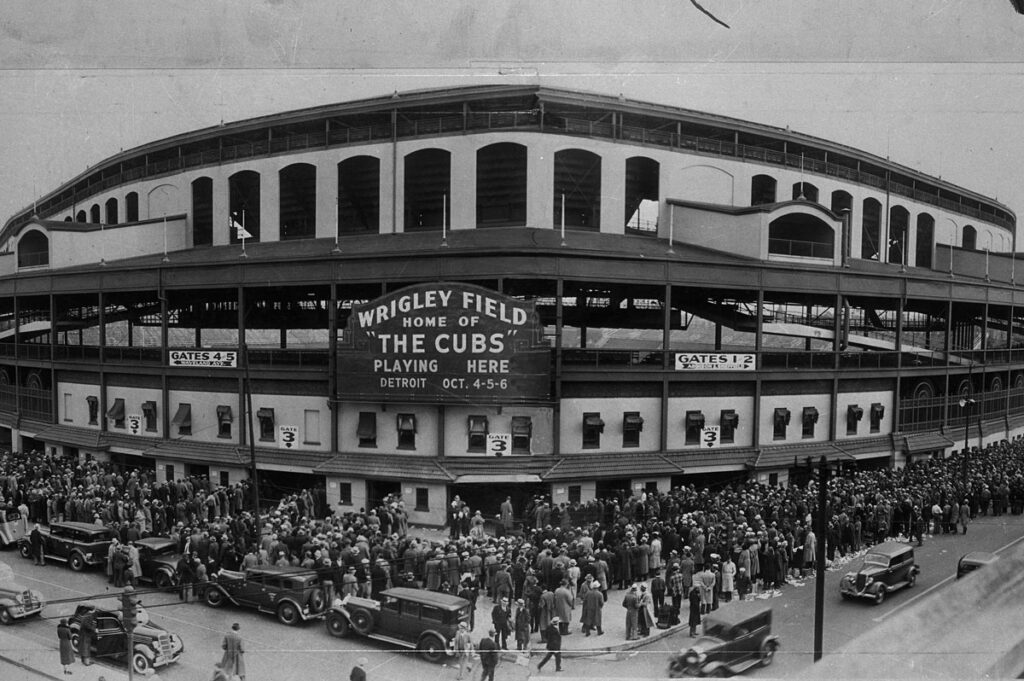
Design and Features
- The Jewel Box Style
Wrigley Field is built in the design of a jewel box ballpark, which was common in the early twentieth century. Both left and right fields have two recessed wall areas, or “wells,” that give those areas a little more length than if the wall followed the contour from the center field. Balls also have a way of bouncing in both directions in such wells while crosswinds are blowing.
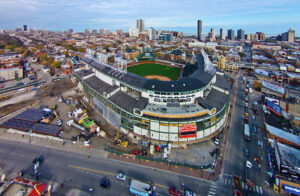
- Ivy-Covered Outfield Walls
The outfield walls of the ballpark are shrouded with ivy. Inspired by Indianapolis-based Perry Stadium, then club president’s son Bill Veeck began the planting of vines in 1937. Every year, as the baseball season continues into spring, the ivy grows dense and lush, concealing the outfield wall’s rough brick surface. The ivy turns red in the summer, usually during the off-season. Wrigley Field was called the “Best Place to Catch a Game in 2013” by Total Pro Sports on April 7, 2013, owing to its ivy-coated field design. On hard-hit drives to the warning track, balls always get lost in the ivy. To make grabs near the fence, outfielders must jump over the ivy.
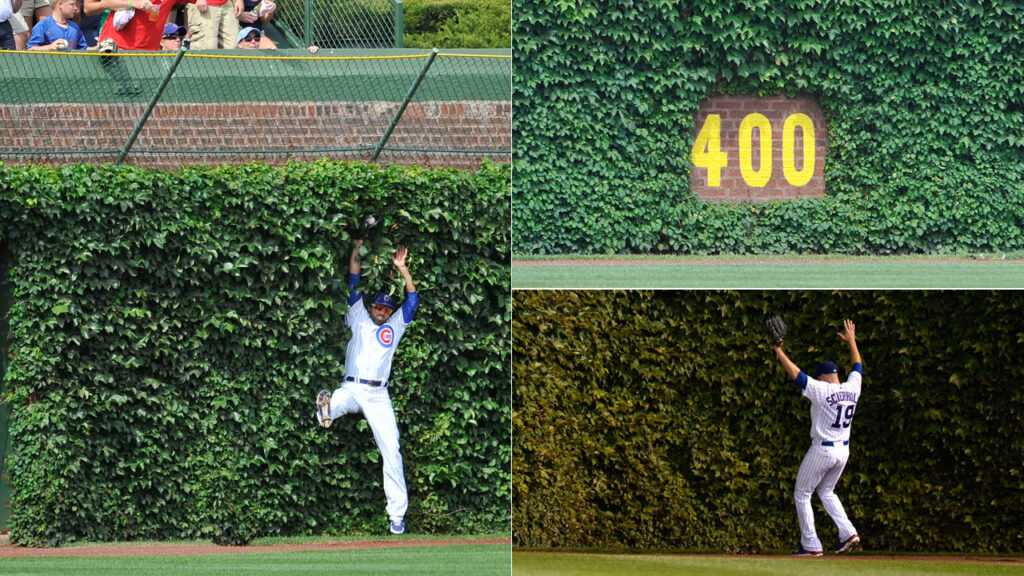
- Wrigley Rooftops
The buildings along Waveland and Sheffield avenues have rooftop clubs that provide spectators with a view of what was going on inside Wrigley Field. Fans sitting in lawn chairs can have a distinct baseball experience. Though the surrounding rooftops were there since 1914, these turn into bleacher-style grandstands in the mid-1980s. The 1990s saw them becoming more organized and offering better facilities. In 2004, 16 rooftop owners became affiliates of Wrigley Field and agreed to pay 17% of their income to the Cubs until 2023. However, the Ricketts family floated Wrigley Rooftops and acquired many of them turning them into the ballpark’s seating zone.
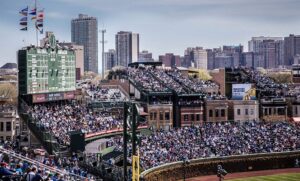
Historical Scoreboard at Wrigley Field
The park’s original scoreboard was one-of-its-kind. Wrigley Field’s scoreboard and bleachers were built in 1937. As baseball grew in popularity, more seats were needed. The original scoreboard, which is run manually even now, still adorns the Chicago Cubs’ home ground. The majority of major league baseball clubs have an automated scoreboard that can be adjusted from the press room. But the Cubs take pride in having their historical heritage intact.
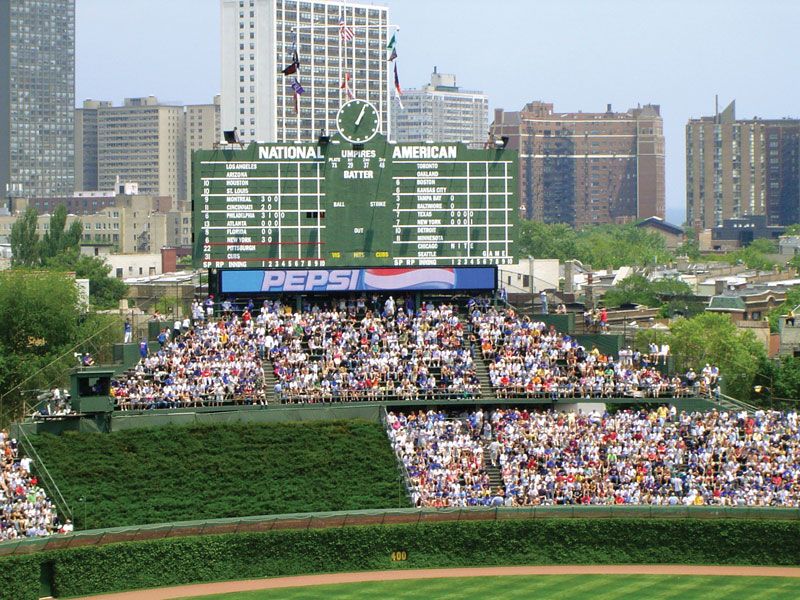
The Lake Michigan Influencer
Wrigley Field has the most unpredictable MLB field thanks to unusual wind patterns developed over Lake Michigan. Located within a mile distance, the lake causes a northeast wind that often turns possible home runs into outs in April and May. Similarly, the southwest wind coming from the lake in August makes harmless balls flying into homers. Often crosswinds blowing from left to right turn a game-changing factor for the post-season playoffs. This physics of wind makes Wrigley Field extremely pitcher-friendly or fully against them.
The Red Entry Marquee
The main entrance to Wrigley Field is dominated by a huge, red-colored, art-decorated marquee. Dating back to 1934, it announces upcoming games. It was originally blue but was changed to red in 1960. It was never removed until the renovations in 2015.

Wrigley Field Lights
There were efforts to install lights for night games at Wrigley Field in 1942. However, it didn’t materialize owing to World War II. However, temporary arrangements led to the first night game – All-Star Game of the All-American Girls Professional Baseball League played on July 1, 1943.
In the late 1980s, the Chicago Cubs planned to leave the ballpark unless there was the installation of lights. This led to the permanent lights at the baseball stadium and the Cubs played their first night game – 5,688th overall – on August 8, 1988. However, the rain-affected game with the Philadelphia Phillies was called off in the fourth innings. The Cubs played their first full-night game defeating the New York Mets 6-4 on August 9. Wrigley Field has an agreement with the city administration to host a limited number of night games.
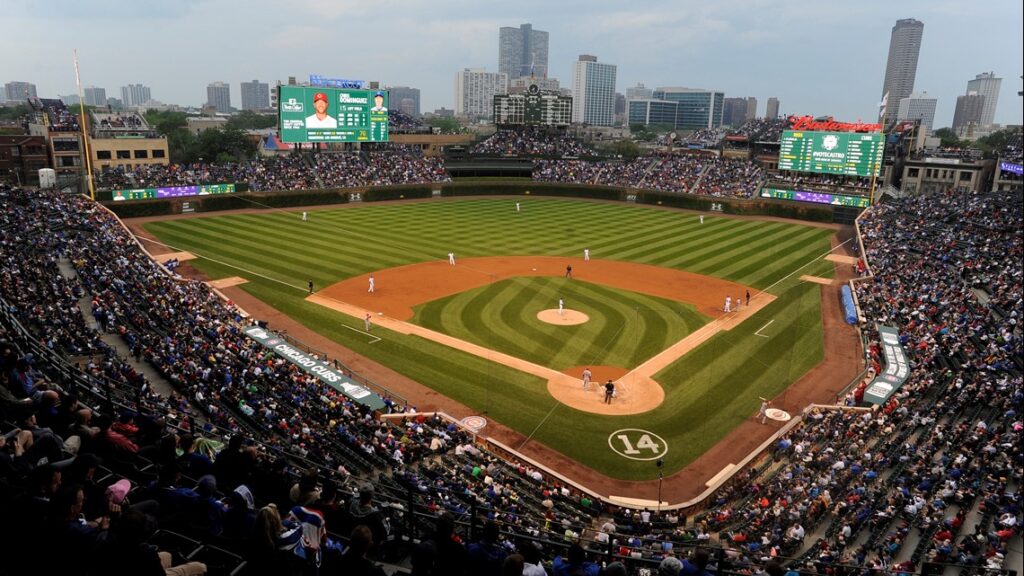
Purely Baseball Things To Know
- The Chicago Cubs won 1907, 1908, and 2016 World Series titles, 7 NL Pennants between, 2 East Division and 6 Central Division titles while playing at Wrigley Field.
- The ballpark hosted 1947, 1962, and 1990 All-Star Games.
- Yankee Babe Ruth scored his famous “called shot” on October 1, 1932, during the World Series at Wrigley Field. It was the fifth innings in Game 3 when Ruth “pointed to a bleacher location” and then hit Charlie Root, the greatest pitcher in the Cubs’ history, to that area for a home run.
- On September 28, 1938, Gabby Hartnett scored his celebrated “Homer in the Gloamin.” The match against the Pittsburgh Pirates was tied and the darkness was descending on a ballpark that had no night lights. Hartnett’s home run helped the Cubs win the game.
- On May 2, 1917, Fred Toney of the Cincinnati Reds ended up with a no-hitter while Cubs’ Jim Vaughn had a no-hitter game until the ninth inning. Jim Thorpe of the Reds scored the only run.
- Home-team favorite Ernie Banks hit his 500th home run on May 12, 1970.
- Pete Rose of the Cincinnati Reds, who scored the highest MLB career hits (4,256), equaled then the highest-hit record of Ty Cobb with his 4,191st hit on September 8, 1985.
- Wrigley Field witnessed home pitcher Kerry Wood making an NL record on May 6, 1998, with a 20-strike-out against the Houston Astros.
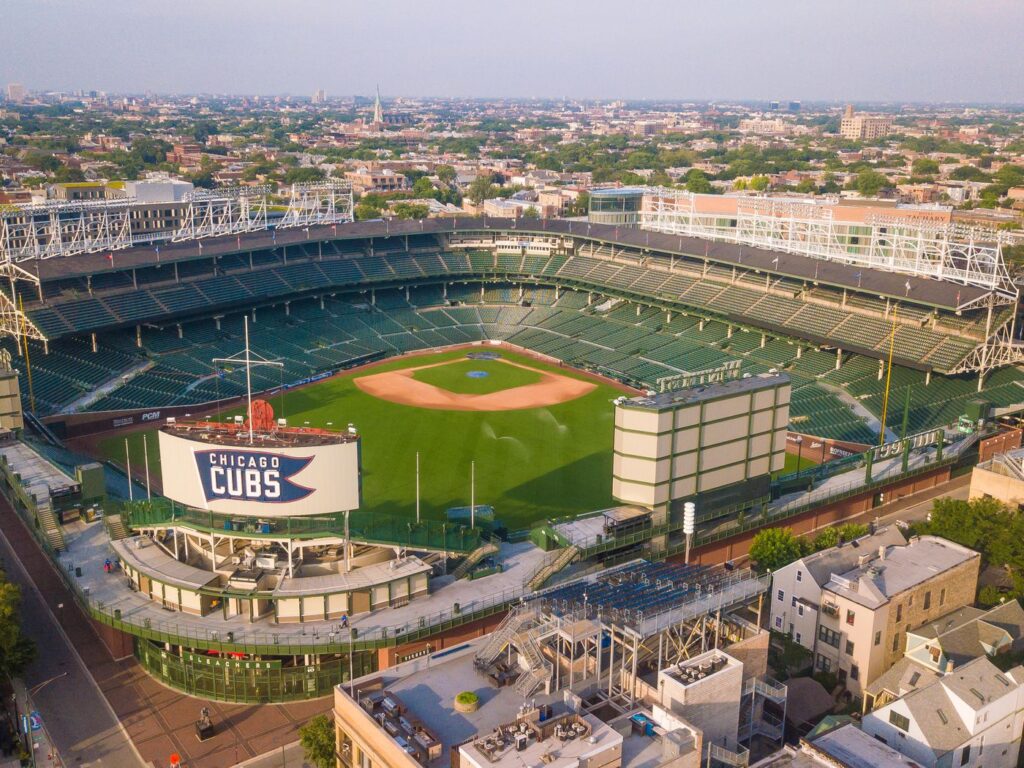
- It took 109 years for the Chicago Cubs to register a post-season playoff win at Wrigley Field on October 13, 2015.
- In 2016, the home team won its first NL pennant since 1945 at the ballpark.
- Kris Bryant of the Chicago Cubes hit the newly installed left-field Jumbotron on May 26, 2015. The ball traveled 477 feet. On October 13, Kyle Schwarber hit the right-field video screen.
- The 100th Anniversary game between the Cubs and Diamondbacks saw both teams wearing uniforms of the Chicago Whales and the Kansas City Packers respectively.
- When a ball lands in the ivy vines and is lost, the batter gets a double.
- In 1972, the wind from Lake Michigan helped Burt Hooton and Milt Pappas got no-hitters. In 2015, Cole Hamels of the Philadelphia Phillies repeated it.
- In 1976, Dave Kingman of the Mets hit the ball that traveled 550 feet.
- In 1930, Hack Wilson broke the MLB record for the most RBIs. He went on to score 191 RBIs.
- On June 23, 1984, Ryne Sandberg of the Chicago Cubs hit two homers – a game-tying and a game-winning – against the St. Louis Cardinals.
- The game played between the Chicago Cubs and the Philadelphia Phillies remains the most scored in the MLB. The Cubs made 24 while the Phillies scored 6 in the first five innings. But from sixth to tenth innings, the Cubs got one run while the Phillies had 17. The Cubs won 26-23.
- Hack Wilson’s 191st run in a season scored on September 28, 1930, continues to become the highest run in one season.
- Stan Musial of the St. Louis Cardinals made his 3000th career hit on May 13, 1958.
- On May 17, 1959, Roberto Clemente blasted a 520-feet hit, the longest ever at Wrigley Field. It was equaled by the Mets’ Dave Kingman on April 14, 1976.
- The game between the Cubs and the Dodgers on August 18, 1982, went for 21 innings, the longest at the ballpark. The home team lost 2-1.
- In 2005, Greg Maddux of the Cubs had his 3000th strikeout.


